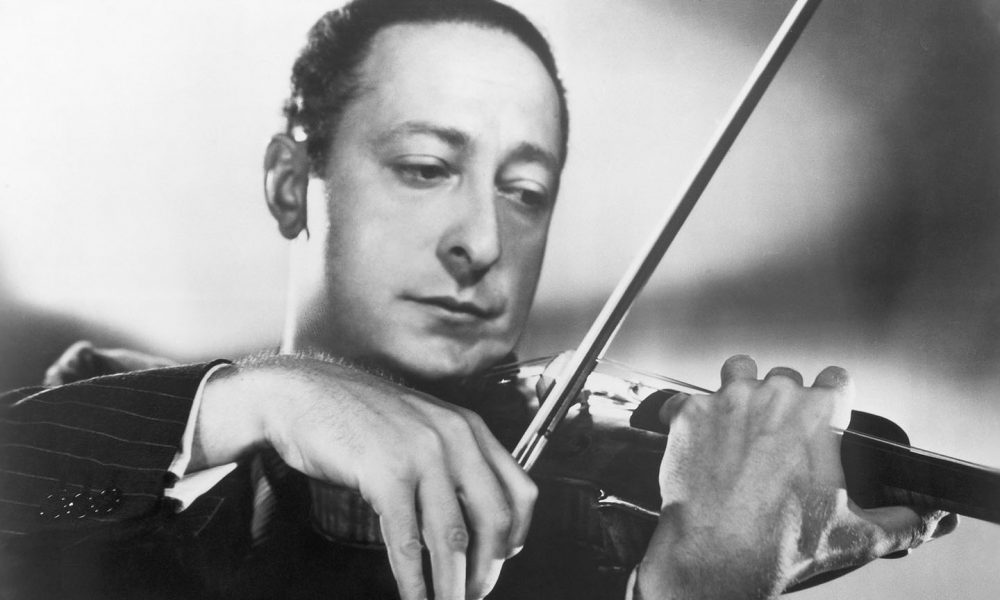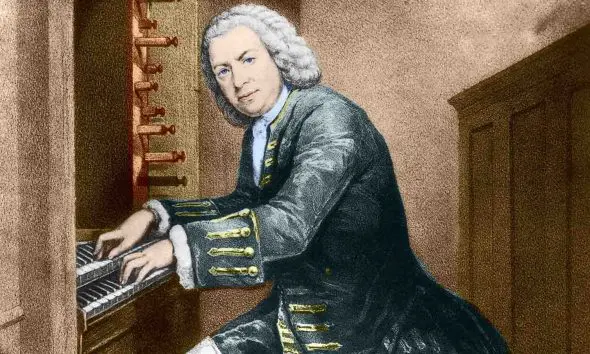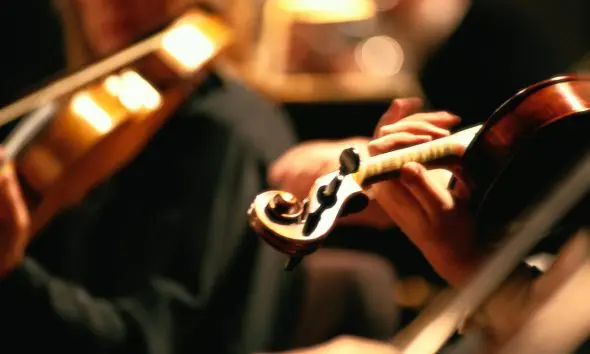Best Violinists: Top 20 Greatest All Time
Who are the best violinists? Discover our selection of the top 20 greatest violinists featuring legendary virtuosos and today’s young stars.

Instruments recognisable as violins began to appear in northern Italy at the beginning of the 16th century. By the 17th century, the violin’s importance had already been established both as a solo instrument and as the workhorse of instrumental ensembles. And it was in Italy during this period that the finest examples were produced by Nicolò Amati, Antonio Stradivari and Guiseppe Guarneri. Almost all of the 20 greatest violinists listed below played (or play) instruments by one or more of these makers. With the widest and most engaging repertoire of any orchestral instrument, it is not surprising that so many great composers have written concertos, chamber and solo works for the violin. It’s amazing what you can do with a wooden box, four strings and a bow! Scroll down to discover our selection of the best violinists of all time.
Best Violinists: Top 20 Greatest All Time
20: James Ehnes (b. 1976), Canadian
The son of a trumpet player and ballerina, Ehnes, in 1988, became the youngest-ever winner in the string section of the Canadian Music Festival; some 19 years later he was the youngest person ever elected a Fellow of the Royal Society of Canada. After studies in his native country and at the Juilliard, he began his international career with playing characterised by a rich, full-blooded tone and a powerful vibrato, unfussy and direct. His recordings have ranged from the rarely heard Bruch No. 3 and Dohnányi concertos to charming performances of Kreisler, Ravel and Dvořák.
19: Kyung-Wha Chung (b. 1948), South Korean
The middle child of seven, four of whom would become professional musicians, Chung made her New York debut in 1968 after studies at the Juilliard. Standing in for Itzhak Perlman with the London Symphony Orchestra in 1970 led to a contract with Decca and a highly acclaimed recording of the Tchaikovsky and Sibelius concertos under André Previn. Though not the first Korean violinist to win international recognition, Chung is a hugely significant figure as one of the earliest – and arguably most successful – classical string players to have come from the Far East to train in America.
18: Hilary Hahn (b. 1979), American
The astonishing Hahn, one of the greatest violinists, first picked up a violin just before her fourth birthday and was admitted to the Curtis Institute aged ten. Her three main teachers represented three different violin schools (Franco-Belgian, German and USA) making her particularly stylishly adept whether in Mozart, the Romantic repertoire or new works which she avidly champions (her recording of Jennifer Higdon’s concerto – written for Hahn – won the Pulitzer Prize for Music). Hahn’s most recent album Paris, released in March 2021, features the world premiere recording of Rautavaara’s final score, Deux Sérénades, which he wrote for her.
17: Gidon Kremer (b. 1947), Latvian
Both the father and grandfather of the multi-award-winning Kremer were violinists. He studied with David Oistrakh in Moscow, winning the 1970 International Tchaikovsky Competition. An energetic and enterprising entrepreneur (he founded the festival Kremerata Musica), he is renowned for his championship of new music, contemporary and forgotten works. With a discography of well over 300 recordings, the influential Kremer is a musical intellectual who produces a wide variety of tone and textures (to some ears he has a rather lean sound) with a collection of instruments that include a Guarneri, a Stradivari and an Amati.
16: Janine Jansen (b. 1978), Dutch
Jansen, one of the greatest violinists of her generation, comes from a family of musicians. Indeed, on her much-discussed recording of Vivaldi’s The Four Seasons (2004), played with one player per string part, her father provided continuo and her brother the cello. As early as 2006 she was one of the most streamed classical artists. To date her albums (all for Decca) have sold 850,000 copies but have been streamed 100 million times. Last September she recorded an album with Sir Antonio Pappano on which she played 12 different Stradivari violins, including those once owned by Fritz Kreisler and Nathan Milstein. Currently, she plays the ‘Shumsky-Rode’ Stradivarius from 1715, on loan from a European benefactor.
15: Isaac Stern (1920-2001), American
The much-lauded icon of the violin was born to a Jewish family in Kremenets (then in Poland, now Ukraine) but the family moved to San Francisco when he was 14 months old. His mother gave him his first piano lessons when he was six and he entered the San Francisco Conservatory at the age of eight. During his long international career he recorded over the course of 50 years a huge proportion of the violin’s repertoire, featuring over 200 works by 63 composers, all for the same label, Sony Classical (formerly CBS Records), including the soundtrack of Fiddler on the Roof. His recording of Barber’s Violin Concerto is a classic. He has a street in Tel Aviv named for him and the main auditorium of Carnegie Hall was renamed after him in 1997 to recognize his efforts to save the hall from demolition in the 1960s.
14: Pablo de Sarasate (1844-1908), Spanish
The most popular violinist in the latter half of the nineteenth century, Sarasate was a flamboyant virtuoso in the Paganini mould. His Carmen Fantasy and Zigeunerweisen are standard repertoire, the latter recorded nearly 250 times including by Sarasate himself in 1904 with eight other titles. Among the many important works dedicated to him were Wieniawski’s Violin Concerto No.2, Lalo’s Symphonie Espagnole, Bruch’s Scottish Fantasy and Saint-Saëns Violin Concerto No.3 and Introduction and Rondo Capriccioso.
13: Joseph Joachim (1831-1907), Hungarian
Joachim, one of the greatest violinists, can be seen as the very antithesis of Sarasate – profound, steeped in the traditions of the German school, conservative, unshowy and serious. His teacher had played Beethoven’s late quartets in the presence of the composer. Joachim’s performances of Beethoven’s Violin Concerto were legendary, while the Joachim Quartet was considered the finest of its day. Brahms wrote his Violin Concerto for Joachim. Few of Joachim’s works have survived in the repertoire. You can hear him in a series of recordings he made in 1903, the earliest-born violinist to have made a recording.
12: Nicola Benedetti (b. 1987), Scottish-Italian
Benedetti, one of the best violinists, was catapulted to national attention when she won the BBC Young Musician of the Year competition in 2004 at the age of 16. For this, she played Szymanowski’s unfamiliar Violin Concerto No. 1 (which she recorded in 2005) heralding a discography that today imaginatively mixes standard repertoire (Mendelssohn, Bruch, et al) with lesser-known and new works. In 2020 she won the Grammy for Best Classical Instrumental Solo with Wynton Marsalis’s Violin Concerto and Fiddle Dance Suite. Her imaginative support of children’s music education was rewarded with a CBE in 2019.
11: Nathan Milstein (1903-92), Russian-American
Milstein was one of the great Russian-Jewish players of the last century who studied with Leopold Auer (in fact, he was probably his last surviving pupil), a classmate of Heifetz and who played Glazunov’s concerto as a student under the baton of the composer. It was in this work that he made his US debut (under Stokowski) in 1929. Having become an American citizen, he never returned to Russia. His classic recordings include the Brahms Double Concerto (with Piatigorsky and Reiner), the Goldmark (under Harry Blech) and the Bach Chaconne in which Milstein’s powerfully-projected, silvery tone is heard to advantage.
10: Joshua Bell (b. 1967), American
A child prodigy who studied with the legendary Josef Gingold (“my mentor and grandfather figure”), Bell appeared with the Philadelphia Orchestra under Riccardo Muti aged 14 and made his Carnegie Hall debit at 17. His soulful, agile playing has led to many fine recordings (notably concertos by Barber, Goldmark and Nicholas Maw whose concerto was written for him) and film soundtracks, among them The Red Violin, Ladies in Lavender and Angels & Demons. He owns the Gibson ex-Huberman 1713 Stradivarius for which he paid $4,000,000.
9: Maxim Vengerov (b. 1974), Russian-Israeli
His celebrated teacher, Galina Turchaninova, with whom Vengerov began lessons at the age of five, declared, “A violinist like Maxim is born only once in a hundred years”. After winning first prize in Poland’s Junior Wieniawski Competition at the age of ten, his rise to international fame was rapid, playing with an impressive array of star conductors. He has made outstanding recordings of the Mendelssohn and Violin Concertos No. 1 of Bruch, Paganini, Prokofiev and Shostakovich. His charismatic stage presence and exuberant technique have won him legions of fans worldwide.
8: Ruggiero Ricci (1918-2012), American
Ricci can claim not only to have had the longest public career of any violinist but also the widest repertoire. He made his debut in 1928 and retired in 2003 during which time he gave over 6,000 concerts in sixty-five countries and made over 500 recordings. He was the first to record Paganini’s Caprices in their original version (and recorded them again on six separate occasions) and gave the world premieres of many contemporary works by the likes of Malcolm Arnold, Benjamin Lees and Alberto Ginastera.
7: Yehudi Menuhin (1916-99), American-born British
A child prodigy who created a sensation playing the Mendelssohn Violin Concerto aged seven, Menuhin is widely regarded as one of the greatest violinists of the twentieth century. As a teenager and international celebrity, he was admired for his phenomenal agility and intensely moving interpretations. Later, technical problems crept in with unreliable intonation and he stopped playing in the early 1990s, not before he had paired up with jazz violinist Stephane Grappelli in 1979 for a famous recording of duets. His most famous recording was made in 1931 at the age of 15 of Elgar’s Violin Concerto conducted by the composer.
6: Anne-Sophie Mutter (b. 1963), German
Mutter, aged just thirteen, was famously invited by Herbert von Karajan to perform with the Berlin Philharmonic Orchestra. After this fruitful collaboration she rose to become one of the best-known instrumentalists on the planet with a string of distinguished recordings to her name – including works written for her by her then husband André Previn and John Williams’ Violin Concerto No. 2 – while pursuing many humanitarian interests. She owns two violins by Stradivari: The Emiliani of 1703, and The Lord Dunn-Raven of 1710.
5: Itzhak Perlman (b. 1945), Israeli-American
Perlman, one of the greatest violinists, seems to have all the technical accomplishment of Heifetz and the communicative warmth of Kreisler (he has something of the same friendly, collegial personality). Afflicted by polio from the age of four, he has to play seated which inevitably invites another level of admiration. His generous, rich tone and expressive depth are ideally suited to the recording studio, and he has featured on several film soundtracks, most notably John Williams’s score for the 1993 film Schindler’s List. Ronald Reagan awarded him the President’s Medal of Freedom in 1986.
4: David Oistrakh (1908-1974), Russian
Oistrakh was one of a number of great musicians born in Odessa (then Russia, now Ukraine). Though highly regarded in the USSR, due to Stalin’s regime he was little known in the West until after the Second World War (he was not allowed to tour the United States till 1955). Prokofiev, Shostakovich and Khachaturian all wrote major works for him. An eloquent, lyrical player who emphasized the similarities between breathing and bowing.
3: Niccolò Paganini (1782-1840), Italian
No one in the nineteenth century had a greater influence on the development of violin technique than Paganini. His 24 Caprices for Solo Violin raised the potential of the instrument to new heights while he himself was the first real classical music superstar. His charismatic stage presence and electrifying performances inspired a whole generation of composers – Chopin, Liszt, Schumann and Berlioz foremost among them.
2: Fritz Kreisler (1875-1962), Austrian-American
No violinist of the first half of the twentieth century was more loved than Kreisler. The warmth of his personality, his genial disposition and generosity as a human being somehow finds its way into his music making. What we hear on any of the huge number of recordings he made is the man himself. Like an alchemist, he was able to turn even third-rate music (of which he played a lot) into gold. Not that he lacked bravura, but there has yet to be a violinist who plays with more charm – and in his own (still popular) music he is sui generis.
1: Jascha Heifetz (1901-1987), Russian-American
For many people, Heifetz was not only the greatest violinist of the twentieth century but of all time. He set new standards of excellence that later generations still attempt to emulate. Born in Vilnius, he was an international superstar from his earliest years. Between his legendary New York debut in 1917 and his first appearance in London in 1920 he had sold 70,000 recordings in the UK alone. The latter occasion prompted George Bernard Shaw to write to him saying he was worried that, “If you provoke a jealous God by playing with such superhuman perfection, you will die young. I earnestly advise you to play something badly every night before going to bed, instead of saying your prayers. No mortal should presume to play so faultlessly.” For several decades, Heifetz was the highest paid musician of his generation. He retired in 1972. Some will tell you that his playing was cold and unemotional. Point them to his recordings of concertos by Tchaikovsky, Wieniawski, Vieuxtemps, Korngold, Walton, Vitali’s Chaconne, Chausson’s Poème and Bruch’s Scottish Fantasy. Cold? More like white hot!





Colin FISHER.
June 25, 2022 at 8:50 pm
RODNEY FRIEND,..??
David Winter
June 27, 2022 at 1:24 pm
What a crazy list! Apart from the dubious nature of such lists as such, what have names like Ruggiero Ricci,Benedetti, Jansen and Ehnes do to on the list of the 20 best ever? All good violinists, but among the 20 best? Ricci compared with M. Rabin, Benedetti compared with Francescatti. Jansen: an outstanding chamber music player, but as a soloist? compared with the personality of Patricia Kopatchinskaja, Sarah Chang, Ida Haendel. Where are the names of such supreme players like Kogan, Julian Sitkovetsky? Repin, Hadelich, Kavakos, Rachlin, Friedman, Elman, Grumiaux, Hubermann, Neveu, Suk, Szeryng etc. etc. etc.
Richard Westerdale
June 28, 2022 at 1:02 am
Mr. Nicholas, articles such as this one should not be published, let alone written. What list of criteria could you possibly employ to compile such a review? You’ve never heard performances by a few of the above artists because they lived before your time. Only someone with an encyclopedic familiarity with vinyl and CD recordings, on-line recordings, and live performances might be capable of rating contemporary violinists.
Donn
June 28, 2022 at 1:44 am
Maybe should be 25 and include Jaap Schroeder, Z Francescati, Artur Grumiaux, and Henryk Szyrng.
Horace Lin
July 14, 2022 at 5:18 am
Hahn worse than Bell and Vengerov? Bell better than Grumiaux, who’s not even on the list? I would take this list with a grain of salt :).
Pablo Zapico Artau
July 17, 2022 at 10:14 pm
Leonid Kogan? Henryk szeryng? Arthur Grumiaux?Ivry Gitlis? Pinchas Zukerman? Michael Rabin?Shlomo Mintz? Christian Ferras?
Pablo Zapico Artau
July 17, 2022 at 10:17 pm
Zino Francescatti?
a
August 17, 2023 at 8:24 am
why is Hahn so low
Dale Blackmore
June 17, 2024 at 7:19 pm
Where are Kogan and Pinchas Zukerman? Zukerman has the.most impeccable intonation and beautiful sound, full of colour and nuance. In my opinion he is the best of all. Ni